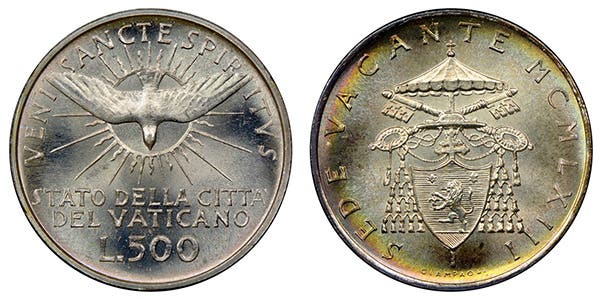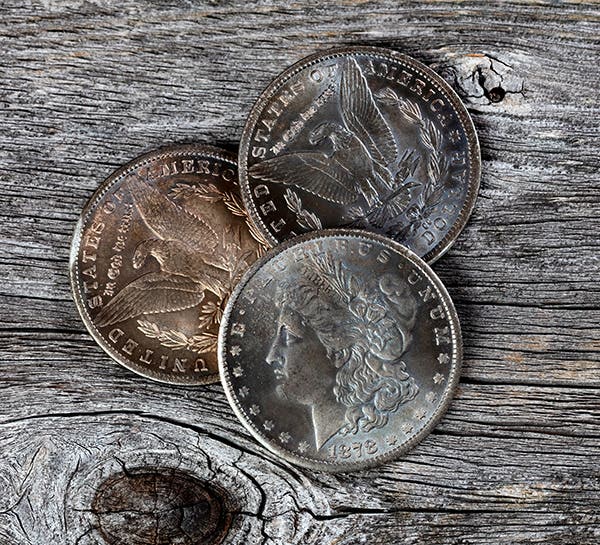Spring Cleaning Your Collection, Part 3
by Mike Thorne, Ph.D. In my two previous columns, I’ve been talking about spring-cleaning your collection/accumulation of coins. Of course, by the time you read this, spring will probably be…
by Mike Thorne, Ph.D.
In my two previous columns, I've been talking about spring-cleaning your collection/accumulation of coins. Of course, by the time you read this, spring will probably be a distant memory, and you'll be sweating through the beginning of summer.
So far, I've talked about the importance of organizing your coins and having a good inventory. I've also talked about selling some of the coins in your collection, such as "orphans" (coins that are oddballs and don't fit your collecting interests), junk coins with some value, and partial sets that no longer interest you.
At the end of my last column, I talked about coin storage and said that I would have more to say about this. If your coins are relatively common and generally worth less than $100 apiece, then you should store them in plastic flips made without PVC that can leach out and cause damage over time. As I wrote last month, "A better type of coin holder is made of inert polyethylene terephthalate. The brand name is SAFLIP, which you can find advertised through a Google search."
On the other hand, if you have a lot of coins worth more than $100 apiece, then you might consider having them certified by a major certification service. By major services, I'm referring to ANACS, NGC, and PCGS.
One value of certification is that it ensures that the coin is genuine, and this is an important consideration for valuable coins that might be the target of coin counterfeiters. Actually, if what I read on Coin Talk is representative, the Chinese may be making counterfeits of relatively common coins as well as valuable ones. They may even be making examples of coins that never existed, such as the "super-rare" 1904-CC Morgan dollar. Note: The last dollars minted in Carson City were dated 1893.
In addition to ensuring that your coins are genuine and graded accurately, slabs provide good protection for your coins. If they're certified, you won't have to worry about plasticizers leaching onto their surfaces or such dangers as an ill-timed sneeze or cough. In fact, if all your coins are encased in the sealed plastic cases of major certification services, then storage becomes less of an issue.
The final topic I want to consider in spring-cleaning your coin collection is your numismatic library. If you don't have a numismatic library, then you're approaching the hobby from the wrong direction. As a number of old-time hobbyists have said, "Buy the book before you buy the coin." My addendum to this rule is, "and read it."
Obviously, the books that you've bought to aid you in your collecting won't do you any good if they just sit on a shelf gathering dust. Like so many collectors, my first coin book was the then-current edition of A Guide Book of United States Coins, aka the Red Book. The publisher of this magazine also publishes a red book (2019 U.S. Coin Digest), which provides a lot of the same information as the original Red Book. Either book would be a worthwhile addition to your library if you don't already have it.
The main reason that any new collector purchases one of these books is to look up the value of some new acquisition. In my case, the acquisition was a circulated Liberty Seated half dime I had found in a long-deceased relative's handkerchief. Once I had looked up the coin, I then spent many hours studying the book to see what I could learn from it. As a person who's always loved numbers, I was particularly fascinated by the mintages of coin types. In fact, I memorized the mintages of many key dates, such as the 1909-S VDB Lincoln cent (484,000), the 1916-D Mercury dime (264,000), and so on.
My first Red Book (1958) contained only eight pages of introductory material before launching into coins and their values. The 2018 edition has 27 such pages, and the 2018 U.S. Coin Digest has 57. You'll find that the study of these pages will give you a good start to becoming a numismatist.
When you look up your coin in the Red Book, you'll see that you need to know its grade in order to determine its value. Let's suppose you have the good fortune to be looking up a 1916 Standing Liberty quarter. You see that the mintage is 52,000, which is a much smaller number than for any of the other dates in the series, and you also see that values for the coin range from $2,300 in G-4 to $15,000 for a coin in MS-63. But what do G-4 and MS-63 mean? And what about the designations between these two extremes?
From my experience, novice collectors automatically assume that if they can read the date and all the other lettering on a coin it must be in tiptop shape, MS-63 in this case. This optimistic grading is almost never justified, and a more realistic determination of the coin's grade will require the collector to study information about grading in the book they're holding. Of the two value guides I've mentioned, Coin Digest does a better job in helping the novice determine a coin's grade for several popularly collected coin types. It does this by providing pictures of coins in different grades rather than just verbal descriptions. Both books are limited relative to dedicated grading guides, such as James F. Ruddy's Photograde, now in its 19th edition, and Grading Coins by Photographs (2nd edition).
There are several grading guides in addition to the ones I've mentioned here. One thing you'll find when you look for the books on Amazon, Barnes and Noble, or eBay is that their prices are quite low, particularly considering the importance of the information they contain. If you buy a grading guide, be sure to take the time to study the book's introductory material, like that found in the two value guides I've discussed. This will provide you with a good orientation to the subject.
At this point, you may decide that studying a grading guide is too boring or too time-consuming. Instead, you'll just purchase coins that are already graded by a certification service. I'll have more to say about why this approach won't always work, and why you should learn to grade for yourself, in my next column.
Did you miss parts one or two of this four-part series? Use the links below to read them in order. And watch for the fourth installment coming next month!








